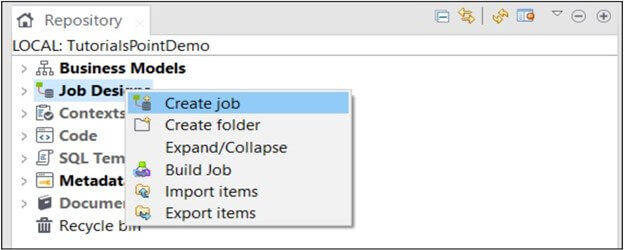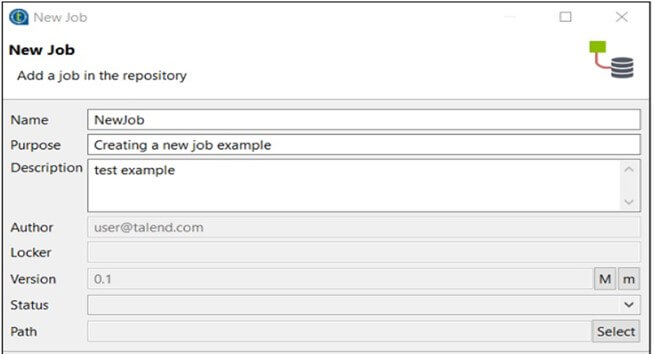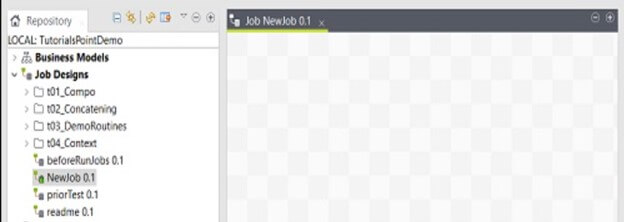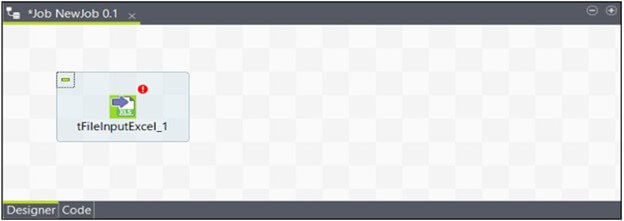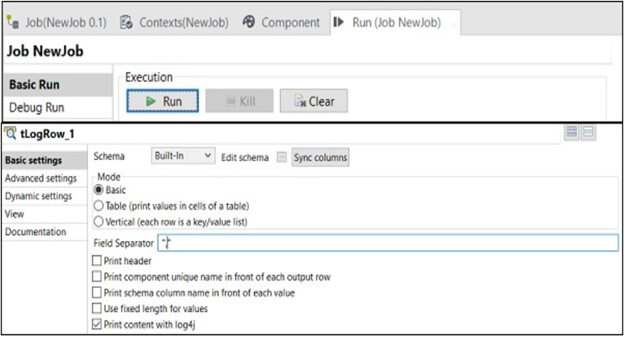Talend Tutorial
Home Data Science Data Science Tutorials Talend Tutorial
Basics
Definition of Talend Tutorial
Talend tutorial provides a brief description of topics related to the talend. Talend is an open-source platform that provides multiple tools for data integration and processing. It allows us to design, deploy and develop the jobs of data integration which is used to connect multiple data sources such as web services, files, cloud platforms, and databases. The Talend platform includes a range of connectors, components, and templates.
Overviews of Talend Tutorial
Talend is used to simplify the task of data integration. We can drag and drop the components of Talend to create the workflows of data integration that are customized and accessed using the built-in language of talend or using java code. The talend tutorial will cover the definition of the talend tutorial, overviews of the talend tutorial, why need to learn the talend tutorial, talend applications, talend examples, prerequisites, and target audience.
Talend also provides a tool for data quality and improvement. Talend tutorial is instructional material that is in the form of video, text, and video. This tutorial covers the advanced and basic topics of the talend. The main goal of the talend tutorial is to gain a better understanding of how we can use talend to transform, connect, and manage the data from multiple resources.
Why do we need to learn Talend Tutorial?
There are multiple reasons to learn the talend tutorial. The below reason shows why we are required to learn the talend tutorial as follows.
- Talend Integration: It is an important data integration tool that helps our business and individuals to manage the data effectively. Learn talend allows us to connect and integrate data from multiple sources.
- Data Quality: Talend offers data cleansing and profiling capabilities which help us to improve the data quality. It is essential for the organization which needs high-quality data to make the decision of business.
- Market Job: It is a popular tool in the industry and multiple companies where they require to hire the roles for data-related jobs. Learning the talend helps to increase the chances of getting hired.
- Data Governance: It offers the capabilities of data governance that allow us to manage and organize compliance policies across the data. This is important in multiple industries.
- Efficiency: Talend offers the user interface to manage the jobs of data integration. While learning talend we can increase the efficiency and productivity of data.
Basically, learning the talend tutorial provides the foundation of talend, which will help in our job also we can improve the quality of data.
Applications
Talend is a powerful tool and it contains multiple applications. Below are the applications of talend as follows.
- Data Warehousing: Talend is used to transform, extract and load the data from multiple sources into the data warehouse. With the talent built-in component of data sources such as big data and cloud storage platforms, it is easy to move data from one place to another place.
- Business Intelligence: We can use talend to integrate the data from multiple sources and also used to create a view of BI reporting. Talend data integration and capabilities of transformation allow us to normalize and clean the data.
- Master data management: Talend is used to manage the data from multiple organizations. This capability allows us to merge and match duplicate data from multiple sources to ensure data quality and consistency.
- Cloud Integration: Talend is used to integrate the data between on-premise and cloud-based applications such as AWS, Salesforce, and Microsoft Azure. Cloud connectors API enables us to easily move the data between the cloud and on-premise system.
- Governance of data: Talend is used to ensure compliance with the regulations and data governance policies. This facility allows us to identify issues of data quality and monitor the data lineage to ensure accuracy and consistency.
- Migration of data: Talend is used to migrate the data from legacy systems to modern applications. This capability is used to extract the data from the legacy system and transform it into the appropriate format.
- Versatility: Talend is used to integrate from multiple sources, which makes it a versatile tool and it is used in projects of data integration.
Example
The below steps show how we can create the talend job as follows. We have created a talend job as MyFirstTalendJob as follows.
- In the first step, we open the studio to create a new job as follows.
- In the second step, we open the new job page and define the job name as NewJob as follows.
- Below we can see that the new job is created in the talend repository as follows.
- In this step, we are adding an excel component from the palette to the designer window as follows.
- Now in this step, we are adding two more component names as log rows and output excel as follows.
- After adding the component now in this step we are connecting to the component as follows.
- After connecting to the component, now in this step we are configuring the component and run the job as follows.
- After configuring and running the job, we can see that output is stored in the excel file as follow.
Pre-requisites
To start with the talend tutorial, it is recommended to have an understanding of the below concepts as follows.
- Data Integration: Talend is a data integration tool, so we require a basic understanding of the integration tool.
- ETL: Talend is used for ETL processes, so we require a basic understanding of ETL processes.
- Basic concept of a database: Basic concepts of the database are also required to work with talend because it works with multiple databases.
- Understanding of talend studio: Working with talend, is important to the understanding of talend studio and its various interfaces.
- JSON and XML: Talend also works with JSON and XML data, so an understanding of those data formats is important.
- Programming concept: Talend uses the java programming language, so a basic understanding of java programming language is useful.
Target Audience
The target audience of the talend tutorial is individuals who are interested to learn the talend for data migration and management. Below is the target audience of the talend tutorial as follows.
- Data scientists and analysts who use talend for data transformation, preparation, and quality management.
- Business analysts who want to use the talend for data visualization and creating reports.
- Data engineer who wants to use the talend for data integration tasks and for the job of ETL.
- Business analyst who wants to create workflows and custom integration jobs by using the programming language of talend.
- It is also useful for students and IT professionals who want to learn the capabilities to process and manage data.
Conclusion
In this article, we have covered multiple topics of the talend. Talend is a valuable tool, anyone can manage this and process the data using multiple sources with guidance and practice. We can use talend to integrate the data from multiple sources, also we can integrate the data from multiple databases.
Let’s Get Started
By signing up, you agree to our Terms of Use and Privacy Policy.
Let’s Get Started
By signing up, you agree to our Terms of Use and Privacy Policy.


Watch our Demo Courses and Videos
Valuation, Hadoop, Excel, Web Development & many more.


EDUCBA Login
This website or its third-party tools use cookies, which are necessary to its functioning and required to achieve the purposes illustrated in the cookie policy. By closing this banner, scrolling this page, clicking a link or continuing to browse otherwise, you agree to our Privacy Policy

